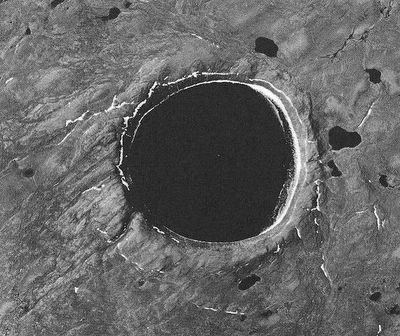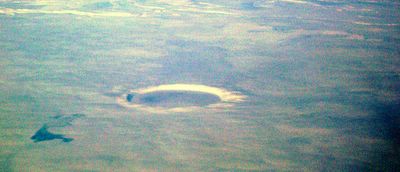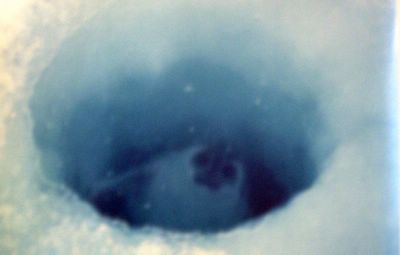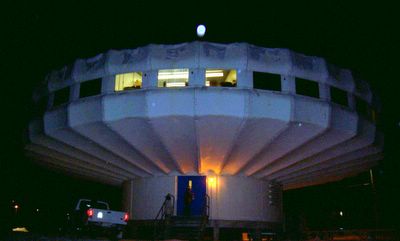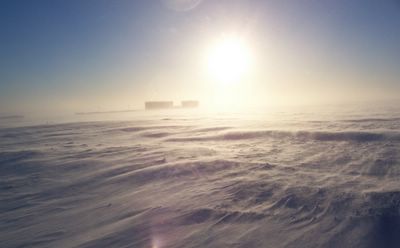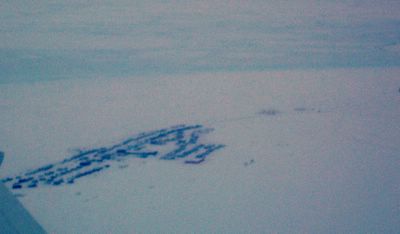This is The Ungava Crater as seen from a high altitude aerial photograph. I didn't realize how large this crater actually is. Whenever I have had the rare opportunity to view this meteor crater, it was usually from 21,000 to 30,000 feet and many kilometers distant. It was hard to estimate the actual size of the crater from my viewpoint. I was amazed to find it's dimensions to be 3.44 Km in diameter and 445 meters in depth.

